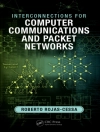The mobile cellular network has its origins in Telco voice networks, but 5G adopts the principles of modern clouds. This book describes how 5G leverages horizontally scalable microservices, Software-Defined Networking (SDN), and cloud operational practices such as Dev Ops. It provides a detailed introduction to mobile networking that is understandable to a general computing systems audience.
Features:
- Emphasizes underlying concepts, key principles and design choices, going beyond the acronym soup of standards.
- Describes the main open source components used to build a private 5G network and the rationale for their selection.
- Walks through the architecture of 5G from the radio to the mobile core.
- Includes sample code used in configuration and operations of a real private 5G network deployed across a dozen enterprises.
’Private 5G networks are something you can touch, code, and deploy yourself. Armed with the knowledge of how 5G access networks work, and with hands-on experience with open source software, just imagine the places you’ll go!’
– Jennifer Rexford, Princeton University
O autorze
Bruce Davie is a computer scientist noted for his contributions tothe field of networking. He is a former VP and CTO for the Asia Pacific region at VMware. He joined VMware during the acquisition of Software Defined Networking (SDN) startup Nicira. Prior to that, hewas a Fellow at Cisco Systems, leading a team of architectsresponsible for Multiprotocol Label Switching (MPLS). Davie has over30 years of networking industry experience and has co-authored 17RFCs. He was recognized as an ACM Fellow in 2009 and chaired ACMSIGCOMM from 2009 to 2013. He was also a visiting lecturer at the Massachusetts Institute of Technology for five years. Davie is theauthor of multiple books and the holder of more than 40 U.S. Patents.












